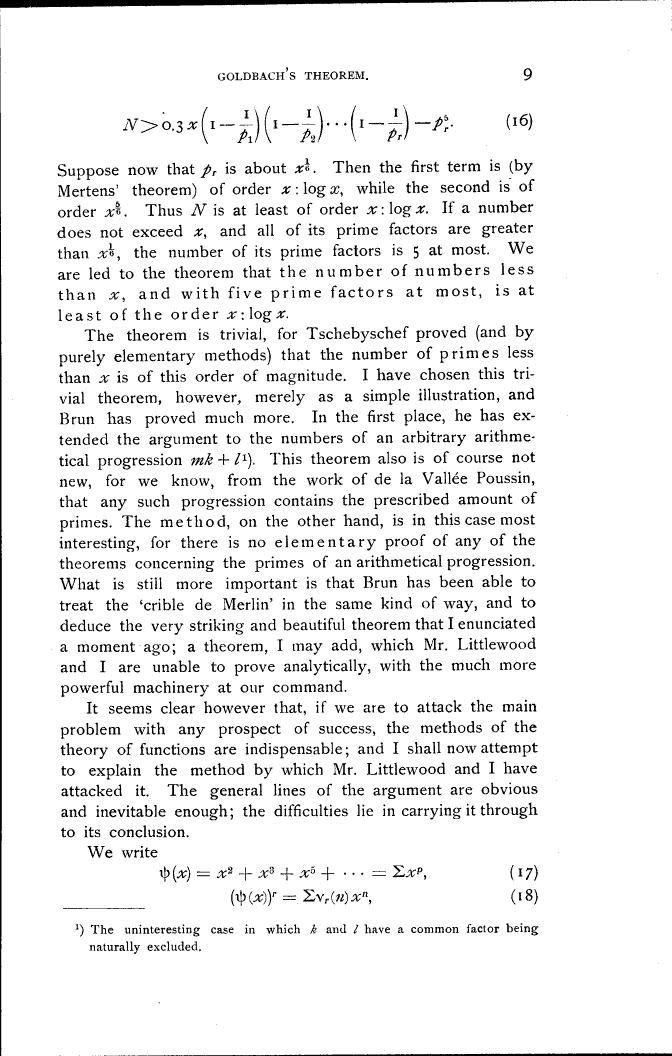
Full resolution (TIFF) - On this page / på denna sida - Sidor ...

<< prev. page << föreg. sida << >> nästa sida >> next page >>
Below is the raw OCR text
from the above scanned image.
Do you see an error? Proofread the page now!
Här nedan syns maskintolkade texten från faksimilbilden ovan.
Ser du något fel? Korrekturläs sidan nu!
This page has never been proofread. / Denna sida har aldrig korrekturlästs.
GOLDBACH S THEOREM.
Suppose now that pt is about x% . Then the first term is (by
Mertens’ theorem) of order x : log #, while the second is of
order x% . Thus N is at least of order x:\ogx. If a number
does not exceed x, and all of its prime factors are greater
than #i, the number of its prime factors is 5 at most. We
are led to the theorem that the number of numbers less
than #, and with five prime factors at most, is at
least of the order x:\ogx.
The theorem is trivial, for Tschebyschef proved (and by
purely elementary methods) that the number of primes less
than x is of this order of magnitude. I have chosen this
trivial theorem, however,, merely as a simple illustration, and
Brun has proved much more. In the first place, he has
extended the argument to the numbers of an arbitrary
arithmetical progression mk + I1). This theorem also is of course not
new, for we know, from the work of de la Vallée Poussin,
that any such progression contains the prescribed amount of
primes. The method, on the other hand, is in this case most
interesting, for there is no elementary proof of any of the
theorems concerning the primes of an arithmetical progression.
What is still more important is that Brun has been able to
treat the ’crible de Merlin’ in the same kind of way, and to
deduce the very striking and beautiful theorem that I enunciated
a moment ago; a theorem, I may add, which Mr. Littlewood
and I are unable to prove analytically, with the much more
powerful machinery at our command.
It seems clear however that, if we are to attack the main
problem with any prospect of success, the methods of the
theory of functions are indispensable; and I shall now attempt
to explain the method by which Mr. Littlewood and I have
attacked it. The general lines of the argument are obvious
and inevitable enough; the difficulties lie in carrying it through
to its conclusion.
We write
(17)
( 1 8)
The uninteresting case in which k and / have a common factor being
naturally excluded.
<< prev. page << föreg. sida << >> nästa sida >> next page >>